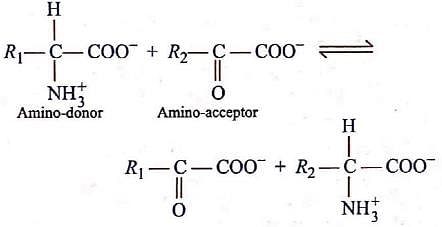Test: Metabolism of Nitrogen (Old NCERT) - Grade 11 MCQ
25 Questions MCQ Test Biology for Grade 11 - Test: Metabolism of Nitrogen (Old NCERT)
Nepenthes, Utricularia and Drosera all are
Leghaemoglobin is produced in response to
Which of the following is a non-symbiotic nitrogen fixing prokaryote?
A farmer adds Azotobacter culture to soil before sowing maize. Which mineral element will be replenished by doing so?
Select the option which completes the given equation for reductive amination.


Nitrogen and hydrogen combine to form ammonia under high temperature and pressure conditions. This is an example of
The process of conversion of atmospheric free N2 gas to nitrogenous compounds like NH3, is termed as
Decomposition of organic nitrogen of dead plants and animals into ammonia is called:
Symbiotic bacteria are found in the root nodules of members of Family
Which one is the major constituent of proteins, nucleic acids, vitamins and hormones?
The process that is the opposite of nitrogen fixation is
During N2 fixation, reduction of one molecule of nitrogen into 2 molecules of NH3 consumes__ molecules of ATP.
If by radiation all nitrogenase enzyme is inactivated, then there will be no
N2-fixing blue-green alga Anabaena which is extensively used in rice cultivation, forms symbiotic association with
Which of the following statements is incorrect about leghaemoglobin?
Refer to the given reaction. What does it depict?

The bacterium ____ belonging to group Actinomycetes produces N2 -fixing nodules on the roots of non-leguminous plants(e.g. Alnus).
Read the following statements and select the incorrect ones.
(i) The co-ordinated activities of the legume and Rhizobium bacteria depend on chemical interactions between the symbiotic partners.
(ii) Leguminous roots secrete chemical attractants that attract Rhizobium bacteria living nearby.
(iii) N, P and K usually do not get deficient in soil due to their low plant requirement.
(iv) Nitrogen cycle is regular circulation of nitrogen amongst living organisms with its reservoir pool in lithosphere and cycling pool in atmosphere.
The limiting factor in nitrogen fixation of soil is
In Nepenthes (pitcher plant), the pitcher is formed due to modification of
______conditions are created by lagnaemoglobin in the root nodule of a legume.
|
219 videos|306 docs|270 tests
|




















